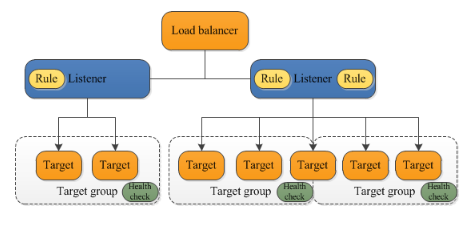Before you proceed towards creating an ALB, there are some terminologies that you must be aware of. These are very important to know, to relate them to the various ALB components. The following figure depicts the relationship between various ALB components:

- Listener: This defines the protocol and port on which the load balancer listens for incoming connections. Each load balancer needs at least one listener to accept incoming traffic. Routing rules are defined on listeners.
- Target group: These are logical groupings of Target behind a load balancer. Target groups can exist independently from the load balancer and can be associated with the load balancer when needed.
- Target: These are nothing but individual EC2 or ECS instances in the target groups. EC2 instances can be registered in the same target group using multiple ports. A single target...



